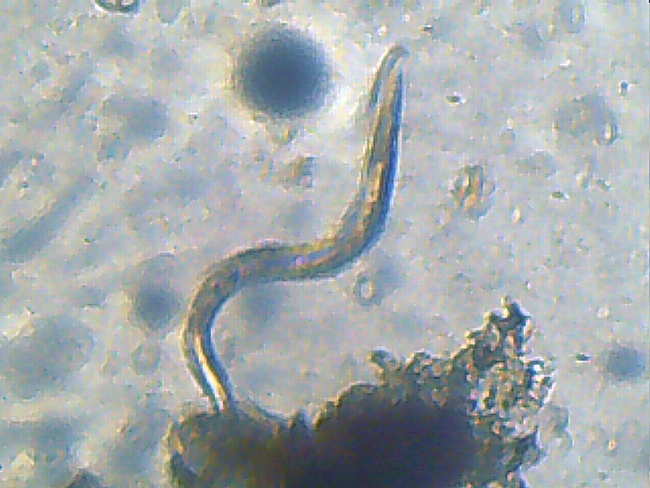- Author: Kathy Keatley Garvey
(Note: The main UC Davis Department of Entomology news page is at https://entomology.ucdavis.edu.)
What's a picnic without bugs!
The UC Davis Department of Entomology and Nematology is gearing up for the 110th annual UC Davis Picnic Day, set April 20.
This year, all of the entomology exhibits, including those at the Bohart Museum of Entomology, will be at Briggs Hall. (The Bohart Museum headquarters in the Academic Surge Building will be closed on Picnic Day.)
Picnic Day at Briggs Hall is from 9 a.m. to 5 p.m. Some of the activities will closer earlier.
The list of events and activities in and around Briggs Hall will include:
Bug Doctor
Briggs Hall Entryway
Graduate students will answer questions about insects. What's that bug? Attendees are encouraged to bring an insect or photo for identification.
Cockroach Races
Front of Briggs Hall
American cockroaches, Periplaneta americana, from Bob Kimsey's forensic lab, race on a specially made track, while roach fans cheer for their favorites. (Sometimes the athletes are named for faculty, friends or bystanders.)
Medical Entomology
122 Briggs Hall
Carla-Cristina "CC" Melo Edwards of the Geoffrey Attardo lab is coordinating the medical entomology display. Her research focuses on investigating the physiological mechanisms underlying pyrethroid resistance in Aedes aegypti (the yellow fever mosquito).
Diversity of Arachnids
122 Briggs Hall
Doctoral student Emma Jochim of the Jason Bond lab is coordinating an exhibit she created last year to display the diversity of arachnids, such as vinegaroons, whip spiders, tarantulas, and scorpions. "We'll have live animals and fact sheets that will give a general overview of their diversity, behavior, and habitat," Jochim said. "I'll also bring some curated specimens to show what goes into creating a scientific collection and talk about why collections are important for understanding biodiversity. "
Maggot Art
Briggs Courtyard
Artists--children and adults alike--create maggot art by dipping a live maggot into water-based, non-toxic paint. It's suitable for framing (or at least a spot on the refrigerator door). This event will close at 3 p.m. this year (last year it was at 5 p.m.)
Dr. Death
122 Briggs Hall
Forensic entomologist Robert Kimsey will display and discuss his work in his "Dr. Death" booth. Last year Kimsey pin-mounted and identified flies from various cases and research efforts, and displayed studies on the sequence of development of individual maggots, calling attention to the development and sequence of communities of insect maggots. "By these means, approximations about how long a person has been dead can be made," he told the crowd.
Entomology at UC Davis
122 Briggs Hall
Displays of insects, including bees, ants and more. Graduate students, faculty and emeriti will staff the tables.
Bohart Museum of Entomology
Front of Briggs Hall
A pop-up tent, staffed by the Bohart Museum, will include stick insects (walking sticks) and Madagascar hissing cockroaches. "We are excited to be part of the bigger department's offerings," said Tabatha Yang, education and outreach coordinator. Give-aways are also planned.
Fly-Tying
Briggs Hall courtyard
Fly Fishers of Davis will show attendees how to tie a fly. The recipients take home the flies.
Insect-Themed T-Shirt Sales
Briggs Hall entryway
Members of the Entomology Graduate Student Association (EGSA), led by president Mia Lippey, will be selling their popular insect-themed t-shirts, including The Beetles. The T-shirt, EGSA's all-time best seller, is a take-off of the cover of The Beetles' Abbey Road alum. However, instead of the Beatles crossing the road in a single file, four beetles (family names Phengogidae, Curculionidae, Cerambycidae and Scarabaeidae) do so.
Mosquito Control Booth
Entrance to Briggs (below front steps)
Sacramento-Yolo Mosquito and Vector Control District will be providing information on mosquitoes, answering questions, and handing out give-a-ways, including mosquito repellent.
UC Statewide Integrated Pest Management (UC IPM)
Briggs Hall Courtyard
“We plan to have many of our usual materials on display and will be giving out the live lady beetles (aka ladybugs) again,” said urban and community IPM educator Lauren Fordyce. “We purchase them from a local garden center. In addition to that, we plan to have a prize wheel that adults and kids can spin, answer a question, and win a prize if they answer correctly. We may also have temporary insect tattoos to give away.”
Ranked Third in the Country. The UC Davis Department of Entomology and Nematology is ranked third among “The Best Entomology Colleges in the United States for 2024" by universities.com. The department includes 24 active and 19 retired faculty; 28 graduate students (five in the master's degree program and 23 in the doctoral degree program); 47 undergraduate entomology majors (based on the Office of Academic Support and Instructional Services (OASIS) Student Reports); and a staff comprised of 27 academics (non-faculty), 24 career, and 56 student assistants. Professor and chair of the department is molecular geneticist and physiologist Joanna Chiu.
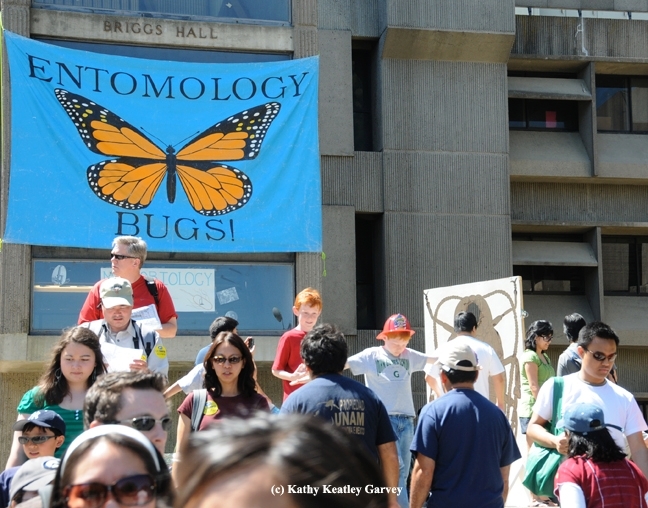
- Author: Kathy Keatley Garvey
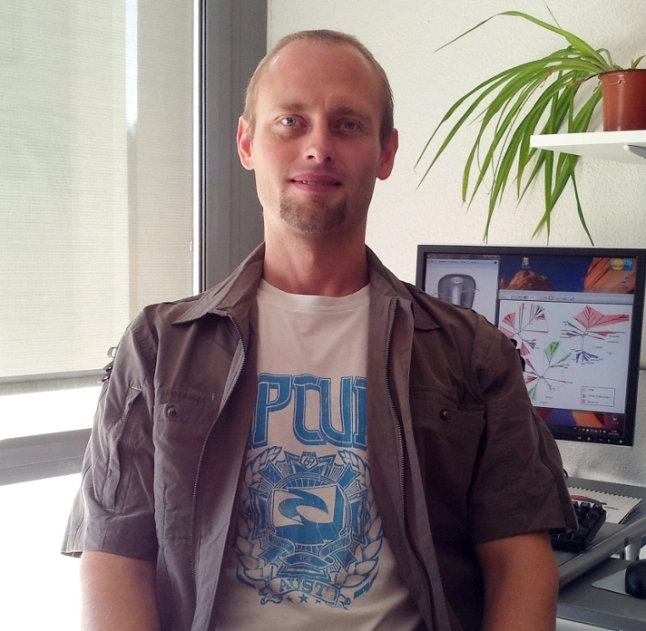
Danchin will speak on "Parasitic Success in the Absence of Sex: What Have We Learned from Nematode Genomes?" at 4:10 p.m., Monday, Nov. 20 in Room 122 of Briggs Hall. It also will be on Zoom. The Zoom link:
https://ucdavis.zoom.us/j/95882849672
Danchin, who specializes in genomics and adaptive molecular evolution, is with INRAE (French National Research Institute for Agriculture, Food and Environment) and is a senior scientist and scientific leader of the GAME team (Genomics and Adaptive Molecular Evolution) at ISA (Institut Sophia Agrobiotech), in Sophia-Antipolis, on the French Riviera.
"Root-knot nematodes are devastating plant parasites of worldwide importance. Interestingly, species that cause most damages reproduce entirely asexually," he writes in his abstract. "These nematodes are extremely polyphagous and have a wide geographic range. Theoretically, in the absence of sexual recombination animal species have lower adaptive potential and are predicted to undergo genome decay. To investigate how these species can be successful parasites on many hosts and in many places around the world, we have sequenced and analyzed their genomes. Out analysis confirmed these species are polyploid hybrids and the combination of several genotypes from different species might provide them with a general-purpose genotype. However, this does not explain how with a theoretically fixed genotype these species are able to overcome resistance genes or adapt to a new host. Therefore, we analyzed genomic variability across different populations and the possible mechanisms underlying genomic variations. In this presentation, I will provide an overview of our findings."
Etienne holds a doctorate in reproductive biology from the University of Paris (1980). He says on his website: "I am an evolutionary biologist working with genomes. I try to make biological sense of genomic singularities observed through comparative genomics. I have a special interest in plant parasites and I use bioinformatics as a tool to perform this research."
He lists his main research interests as:
- The impact of non tree-like evolution such as horizontal gene transfers and hybridization on species biology
- Evolution and adaptation of animals in the absence of sexual reproduction and the underlying mechanisms
- Genomic signatures of adaptation to a parasitic life-style
Seminar coordinator is Brian Johnson, associate professor, UC Davis Department of Entomology and Nematology. For Zoom technical issues, he may be reached at brnjohnson@ucdavis.edu. The list of seminars is posted here.
- Author: Kathy Keatley Garvey
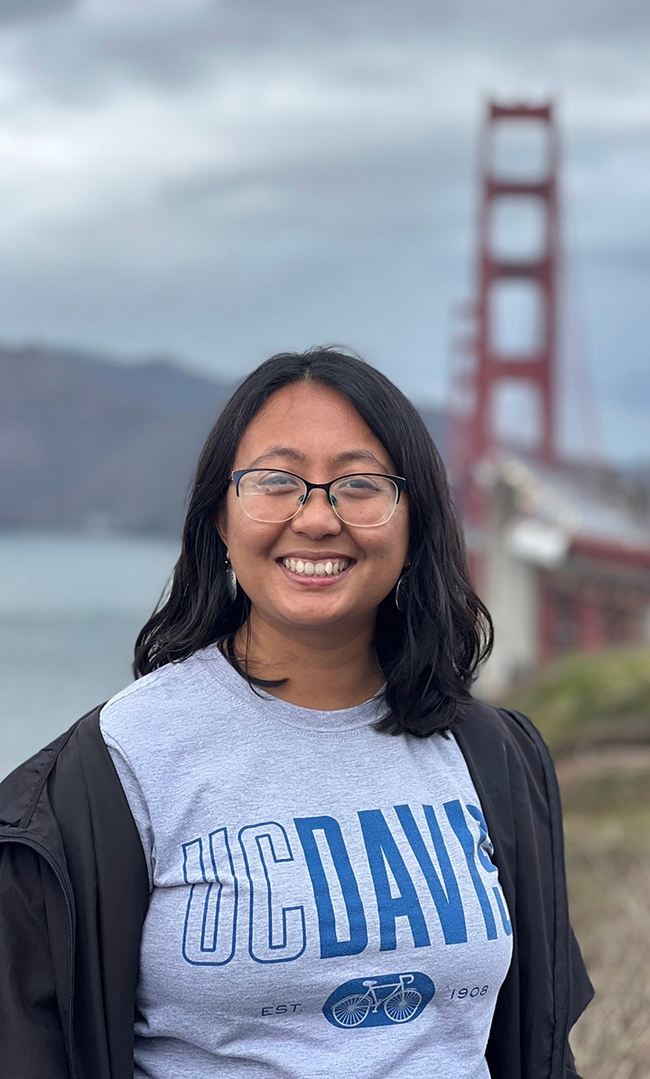
Alison Coomer, Pallavi Shakya and Ching-Jung Lin are among the record 18 students given travel awards by SON, thanks to industry sponsors. All travel award recipients will deliver a presentation or provide a poster at the international meeting.
Bayer Crop Science will sponsor 10 travel awards, and Microbes, Inc., Certis Biologicals and Corteva, will each sponsor two awards. In addition, the United Soybean Board will provide two travel awards to students presenting nematode research in soybean production.
Alison Coomer
Alison, a third-year graduate student in the Department of Plant Pathology, is focusing her research on plant parasitic nematodes, specifically root-knot nematodes, and their molecular mechanisms to defend against plant immune systems. "I am also working to gain more understanding in the defense mechanism in plants towards plant parasitic nematodes."
Alison, originally from the St. Louis, Mo., region, received two undergraduate degrees from Concordia University, Neb.: a bachelor's degree in biology and a bachelor's degree in chemistry.
"I am very thankful to Cobb Foundation and Mai-Ferries-Bird for receiving one of the most prestigious student awards: Cobb Foundation/Mai-Ferris-Bird Student Travel Award," she said.
In her leisure time, Alison enjoys "the outdoors, animals of all varieties, and serving my community."
Pallavi Shakya
Pallavi is a second-year doctoral student in Siddique lab. "I come from Nepal, the land of Himalayas and I am interested in exploring plant parasitic nematodes from a combination of plant pathology and bioinformatics viewpointism," she related. Pallavi received her master's degree in plant biotechnology from Wageningen University in the Netherlands where she was introduced to transcriptomics of potato cyst nematodes.
"Working with these nematodes showed me the importance of understanding plants along with the parasites they have co-evolved with," she said. "In the Siddique lab, I plan to learn about the genomics and transcriptomics aspects of plant-nematode interaction."
"I am very thankful to Bayer Crop Science for my student travel award, and I am looking forward to meeting all the amazing nematologists in the meeting."
Ching-Jung Lin
Ching-Jung is a doctoral student in the Department of Plant Pathology with a designated emphasis in biotechnology. "I am fascinated by plant-microbe interaction," she said. "Currently I am interested in the development of functional genetic tools in plant-parasitic nematodes and the characterization of nematode-induced plant immunity. Originally from Taiwan, she holds a bachelor of science degree in agronomy from National Chung-Hsing University, and a master's degree in plant biology from National Taiwan University.
"I am very thankful to Bayer Crop Science for funding my student award and I look forward to delivering my presentation at the SON conference," she said. Outside of the lab, Ching-Jung enjoys "reading, jogging, playing badminton, and going to the gym." And, she added, "I am a coffee and dog person."
Research in Shahid Siddique Lab
Research in the Siddique lab focuses on basic as well as applied aspects of interaction between parasitic nematodes and their host plants. "The long-term object of our research," he says, "is not only to enhance our understanding of molecular aspects of plant–nematode interaction but also to use this knowledge to provide new resources for reducing the impact of nematodes on crop plants in California."
SON is an international organization formed to advance the science of nematology in both its fundamental and economic aspects.
"Nematodes are the most abundant multicellular animals on the face of the earth," SON relates on its website. "They occur literally everywhere--in soil and decaying matter from the poles to the tropics, in all forms of plant life, in the bodies of almost all animals, including humans, and in insects. Living in such diverse environments as the sand and mud of the ocean bottom, stony mountain soils, and arid polar deserts are thousands to millions of nematodes per square meter."
SON defintes nematodes as "nonsegmented roundworms with complete sensory, digestive, excretory, and reproductive systems. Most, but not all, are microscopic. The variety of nematode forms and habitats is almost unbelievable: they range from the minute inhabitant of your favorite mushroom to the 27-foot-long parasite in the placenta of a sperm whale."
"Nematodes are essential elements of ecosystems, but most have no direct effect on humans," the SON website points out. "Those that do, however, can be devastating. In many places, people still suffer from diseases such as elephantiasis, river blindness, and hookworm, caused by nematodes. In most places, the effect on humans is indirect. For example, in the United States, plant-parasitic nematodes cause more than $3 billion worth of crop losses each year, and cause similar losses in cattle, sheep, and swine." (See more information about nematodes on its website.)


- Author: Kathy Keatley Garvey
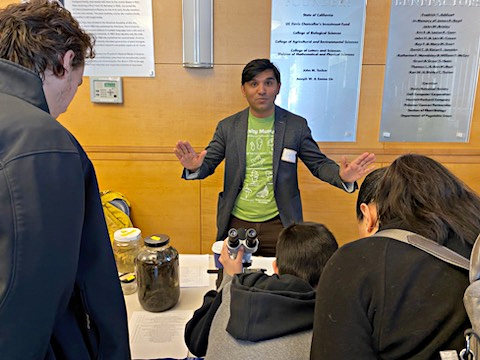
The Shahid Siddique laboratory was out in force on Saturday, Feb. 18 during the 12th annual UC Davis Biodiversity Museum Day.
The nematologists set up their display in the Katherine Esau Science Hall, formerly the Sciences Lab Building, and drew nearly 1000 visitors, the most ever.
“BioDiv Day went really well,” said Siddique, an assistant professor of nematology, UC Davis Department of Entomology and Nematology. “A lot of people took interest in getting information about dog heartworms and root-knot nematodes infecting tomatoes. Some people said that nematodes were their favorite stop for BioDiv Day. We had 906 visitors in total and a vast majority of them were kids with family.”
Participating with Siddique were his graduate students Alison Coomer, Veronica Casey, Pallavi Shakya, and Ching-Jung Lin, and professor emeritus Valerie Williamson of Plant Pathology.
The Siddique lab focuses on basic as well as applied aspects of interaction between parasitic nematodes and their host plants. "The long-term object of our research is not only to enhance our understanding of molecular aspects of plant–nematode interaction," Siddique says, "but also to use this knowledge to provide new resources for reducing the impact of nematodes on crop plants in California."
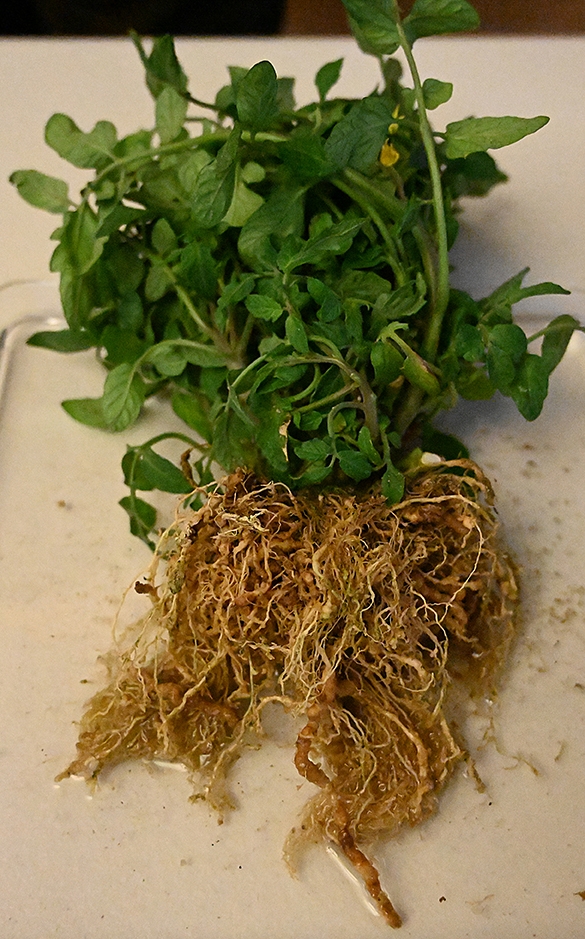
- Celery infected with root-knot nematodes
- Anisakis nematodes from a Minke whale stomach
- Heart of a dog infected with heartworms (Dirofilaria immitis)
- Parasitic nematodes (Baylisascaris transfuga) isolated from the stomach of a bear
- White-tailed deer eye infected with parasitic nematodes (Thelazia spp.)
- Sugar beet infected with root-knot nematodes
- Dog ascaris (Toxocara canis) cause of visceral larva migrans
- Common parasitic worms of human (Ascaris lumbricoides) cause of Ascaris isolated from human intestine
- Dog intestine infected with whipworms
- Horse stomach parasite community including 1) Parascaris 2) Tapeworms 3) Botfly larvae
- Yam infected with root-knot nematode
- Tomato root infected with root-knot nematode
- Adult raccoon roundworms
- Filarial nematodes (Onchocerca volvulus) cause of Onchocerciasis river blindness
- Zoonotic hookworms (Ancylostoma caninum)
- Ascaris lumbricoides (common parasitic worms of human)
- Tree swallow infected with Diplotriaena nematode
- Sugar beet infected with cyst nematode (Heterodera schachtii)
- Grape roots infected with Root-knot nematodes
- Mormon crickets infected with horsehair worms (Gordius robustus)
- Peach roots infected with root-knot nematodes
- Anisakis nematodes from fish intestine
- Hysterotahylaciun nematodes isolated from fish
- Pinworms isolated from human intestine
- Whipworms isolated from human Intestine
- Anisakis nematodes isolated from seals
- Adult dog heartworms
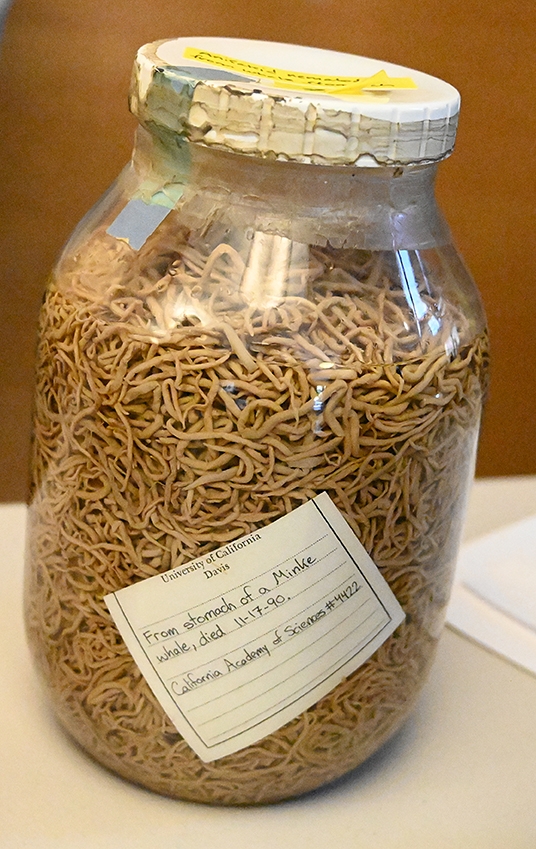
BioDiv Day, founded by the Bohart Museum, is traditionally held on Presidents' Day weekend. Some 3000 attended this year's event, estimated chair Tabatha Yang, education and outreach coordinator of the Bohart Museum. The "Super Science Day" is free and family friendly. Yang is encouraging donations to help pay expenses; access the UC Davis crowdfunding page.
The Esau Science Hall is newly named for UC Davis professor emeritus Katherine Esau, 1898-1997. Internationally known as one of the most influential plant biologists and professors in history, Esau is lauded for her pioneering work on plant anatomy and structure that laid the foundation for much of today's research in the field. She won the National Medal of Science awarded by then president George Bush.
Esau was born in Ukraine. Her family fled to Berlin after World War I and then emigrated to the United States. She joined the UC Davis faculty after receiving her doctorate in 1931. She was elected to the National Academy of Sciences in 1957, only the sixth woman to receive that honor. Following her retirement, she relocated to UC Santa Barbara in 1965. According to Wikipedia, she continued research well into her 90s, publishing a total of 162 articles and five books.
Esau died June 4, 1997 at age 99 in Santa Barbara. A New York Times article quoted Peter Raven, director of the Missouri Botanical Garden: "She absolutely dominated the field of plant anatomy and morphology for several decades. She set the stage for all kinds of modern advances in plant physiology and molecular biology."
In 1982, at age 84, Esau delivered her final UC Davis lecture, covering plasmodesmata. In 1988, she donated $648,000 to UC Davis to establish an endowment to fund plant research fellowships in perpetuity. As of 2020, the endowment's market value has increased by almost six times its original amount, standing at $3.7 million, according to a UC Davis news story.
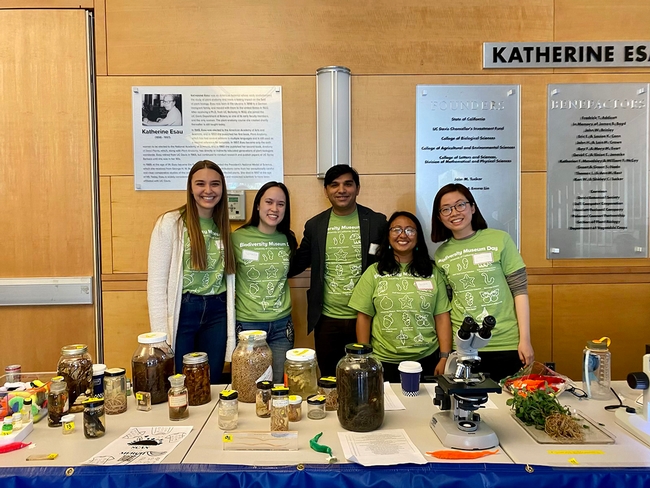
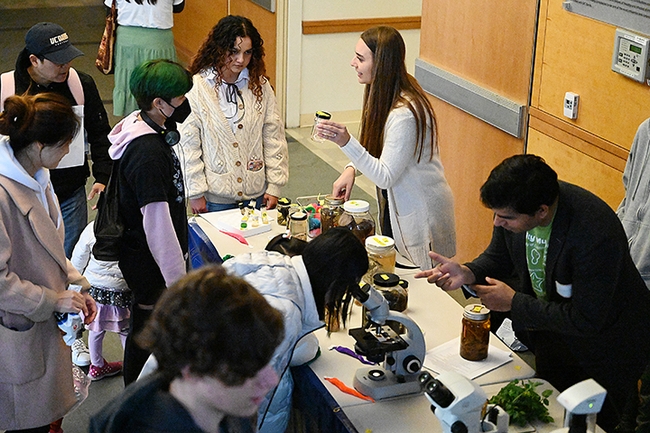
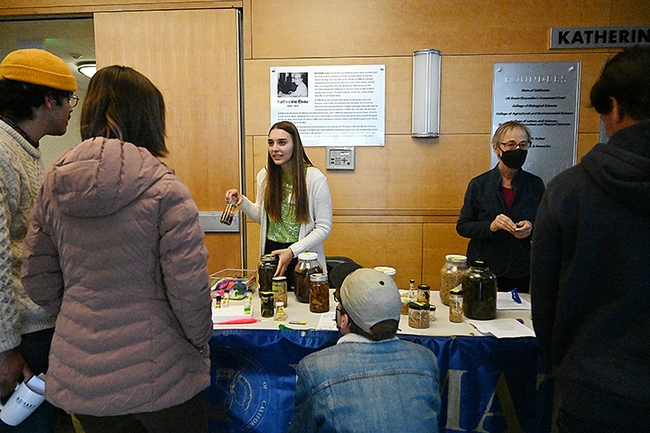
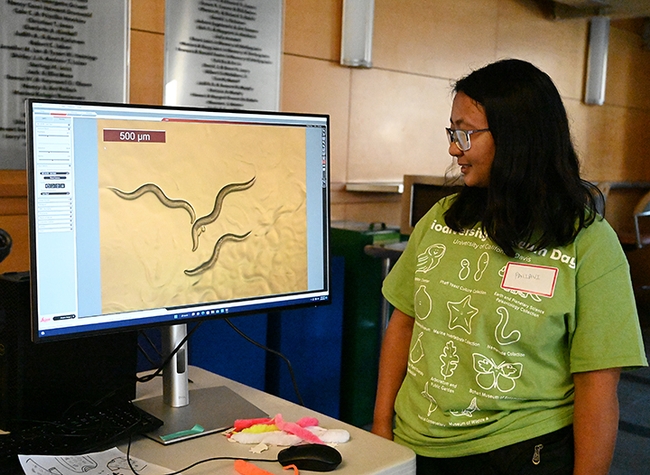
- Author: Kathy Keatley Garvey
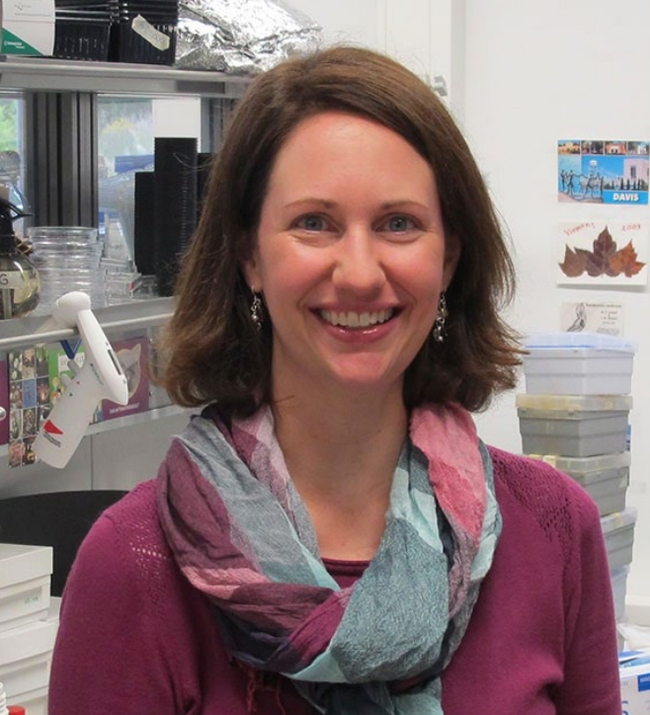
Her seminar, both in-person and virtual, begins at 4:10 p.m., Wednesday, Nov. 16 in 122 Briggs Hall. The Zoom link: https://ucdavis.zoom.us/j/95882849672.
Nematologist Shahid Siddique, assistant professor, UC Davis Department of Entomology and Nematology, is the host.
"Meloidogyne chitwoodi is a root-knot nematode often found in potato growing regions of Northwestern United States," Gleason says in her abstract. "It is a nematode that can infect both potato roots and tubers. In the case of tuber infections, it causes small pimple-like blemishes on the skin, giving the potato a rough, bumpy appearance. Unfortunately, there are no commercially available potato cultivars that are resistant to M. chitwoodi."
"The Gleason lab is undertaking several different lines of research to develop novel tools to combat these nematodes," she said. "For example, we characterize nematode effectors, which give us information about how the nematodes avoid or suppress the plant immune system. In addition, we are developing molecular markers to distinguish the different M. chitwoodi populations that differ in host range and virulence. On the plant side of the interaction, we are studying nematode resistance in potato, including resistance triggered by the potato defense elicitor called Pep1."
Gleason, who joined the WSU faculty in 2016, holds a doctorate in biochemistry and molecular biology from UC Davis (2003). She served as postdoctoral fellow, Disease and Stress Biology, John Innes Centre, Norwich UK (2003-2006), postdoctoral fellow, Plant Industry, CSIRO, Perth, Australia (2006-2010); and as junior professor in the Department of Plant Molecular Biology and Physiology, Georg-August-University Göttingen, Germany (2011-2016).
From her WSU website: "My research centers around plant parasitic nematodes and primarily focuses on root-knot nematodes and their interactions with host plants. These small roundworms are soil borne pathogens that can infect most vascular plants. The root infections cause damage that affects water and nutrient uptake, and this can lead to dramatically reduced crop yields. In order to develop new strategies to combat nematodes, my group studies root-knot nematode secretions that are released into the plant and manipulate host defenses and signaling pathways. One focus of study is on the root-knot nematode Meloidogyne chitwoodi, a serious pathogen of potatoes in the region. We are interested in identifying novel M. chitwoodi pathogenicity genes required for successful potato infection. We are also working to dissect the defense responses triggered during infection of nematode-resistant potatoes. My lab uses a variety of experimental approaches, such as gene expression analyses, generation and characterization of transgenic plants, and heterologous expression of nematode genes in bacteria, to increase our knowledge of the plant/nematode interaction at the molecular level."
Emily Meineke, assistant professor of urban landscape entomology, UC Davis Department of Entomology and Nematology, coordinates the department's seminars for the 2022-23 academic year. All 11 seminars will take place both person and virtually at 4:10 p.m. on Wednesdays in Room 122 of Briggs Hall except for the Nov. 9th and Dec. 7th seminars, which will be virtual only, she said. (See list of seminars)
For further information on the seminars or to resolve any technical difficulties with Zoom, contact Meineke at ekmeineke@ucdavis.edu.
